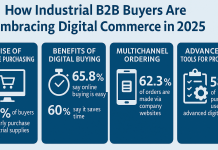In order to provide fresh produce producers with a new method of sourcing and scheduling transportation at reasonable prices, Procurant and Uber Freight US have teamed up.
According to a news release, the partnership combines Uber Freight logistics solutions that provide dependability, flexibility, and transparency for shippers and carriers with Procurant’s cloud-based software for the food supply chain.
According to Eric Peters, CEO of Procurant, “This agreement is a game-changer for grocery stores and their produce suppliers, and it will provide desperately needed relief to an industry dealing with escalating transportation costs and truck availability.”
Produce suppliers will have access to the new Procurant Ship functionality created as a consequence of this cooperation, which will allow them to see affordable shipping costs. According to the statement, they may also guarantee the transportation of cargo while responding to a current purchase order and view real-time in-transit status within the Procurant order management platform.
It also offers rapid access to the carrying capacity that is available, streamlining the carrier selection process.
According to Matt Menner, head of 4PL sales for Uber Freight in the east, since freight costs remain unstable, this technology aids producers in finding transportation providers who are efficient, secure, and dependable, ensuring that the food is delivered on schedule and remains fresh.
In “this exciting cooperation with Procurant,” Menner stated, “we strengthen the resilience of product supply chains by decreasing waste, maintaining cost-effectiveness, transporting product more effectively, and ultimately better supporting the communities we serve.”
Despite the $3 trillion-plus market for fresh food worldwide, Gary Loh, CEO of DiMuto, stated in an August interview that the agriculture sector frequently still relies on paper paperwork and manual business practices.
Given the industry’s small profit margins, even a 1% waste factor can reduce profits by 30% or more, according to Loh.












